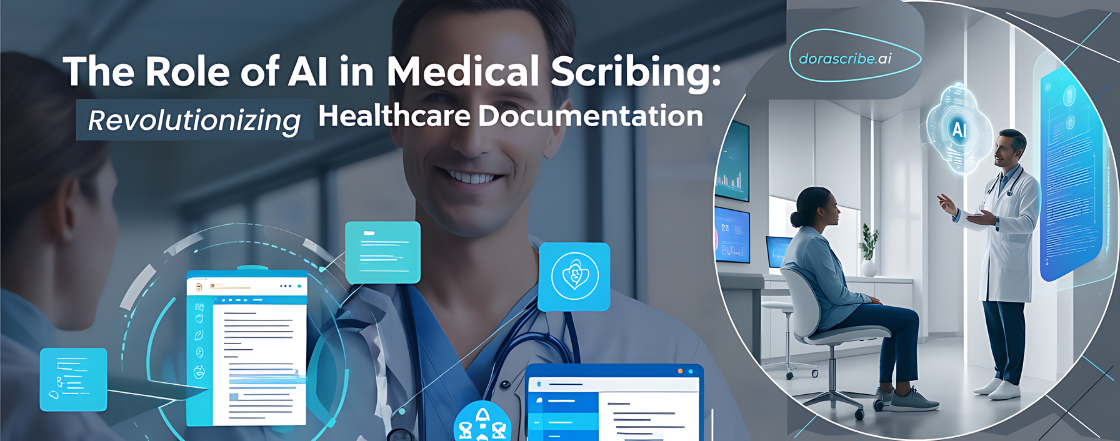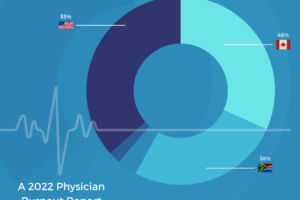The Role of AI in Medical Scribing: Revolutionizing Healthcare Documentation

The Role of AI in Medical Scribing: Revolutionizing Healthcare Documentation
Medical scribing involves the documentation of patient encounters in real-time, allowing physicians to focus on patient care rather than administrative tasks.
Traditionally, medical scribes were individuals who manually transcribed patient information into medical records. This process, although effective, was time-consuming and prone to human error.
With the advent of digital technology, medical scribing has evolved significantly. The introduction of Electronic Health Records (EHR) systems marked a significant step forward, making it easier to store and retrieve patient data. However, even with these advancements, the need for manual data entry persisted, leading to the emergence of AI-driven solutions which today, have given rise to the exceptional wits of the dorascribe.ai mechanism.
The Importance of Medical Scribes
You’d agree that in today’s world, the importance of Medical Scribes is undebatable as Medical scribes play a crucial role in healthcare by reducing the administrative burden on physicians, improving the accuracy of medical records, and enhancing patient care.
- Efficiency: Medical scribes help reduce the time physicians spend on documentation, allowing them to tend more patients and enhance overall efficiency in healthcare settings.
- Accuracy: Scribes ensure that medical records are accurate and detailed, lowering the possibility of errors that could impact patient care.
- Patient Care: By handling documentation, scribes enable doctors to engage more with their patients by taking care of paperwork, leading to better patient outcomes and satisfaction.
The Emergence of AI in Medical Scribing
- Introduction to AI in Healthcare.
The simulation of human intelligence in machines programmed to think and learn is what we have come to know as Artificial Intelligence – AI. In healthcare, AI is being used to analyze complex medical data, assist in diagnosis, and automate administrative tasks like medical scribing.
Significant technological improvements have accompanied the journey of artificial intelligence (AI) so far, from idea to practical implementation in medical scribing. While its first uses in healthcare were restricted to straightforward duties, the technology is now used in medical scribing systems that can properly record patient interactions in real-time.
- Key Technologies.
- Natural Language Processing (NLP): NLP is a branch of AI that allows machines to comprehend and interpret human language. In medical scribing, NLP is used to transcribe medical conversations, ensuring that the documentation is accurate and contextually relevant.
- Machine Learning: Machine learning algorithms are designed to improve with practice and time. In medical scribing, these algorithms use historical data to improve transcription productivity and accuracy.
- Voice Recognition: Advances in voice recognition technology have significantly impacted medical scribing. Due to their accuracy in capturing and transcribing spoken language, documentation processes become more streamlined and reliable.
Benefits of AI in Medical Scribing
- Increased Efficiency.
AI-driven medical scribing systems offer numerous benefits, starting with increased efficiency.
- Time-saving: AI systems significantly reduce the time required for documentation, allowing physicians to focus on patient care.
- Automation: Automated procedures reduce the need for manual data entry and the possibility of inaccuracy by streamlining scribing tasks.
B. Improved Accuracy.
Another significant benefit of AI in medical scribing is improved accuracy.
- Error Reduction: AI systems are less prone to human errors, ensuring that medical records are accurate and reliable.
- Consistency: Standardized documentation procedures help achieve medical records that are high-quality and consistent, which are essential for patient care and compliance.
C. Enhanced Patient Care.
The ultimate goal of AI in medical scribing is to improve patient care.
- Doctor-Patient Interaction: By cutting down on paperwork time, healthcare providers can spend more time engaging with patients; this enhances the standard of care.
- Data Availability: AI systems offer immediate access to patient records and data, facilitating better decision-making and improved personalized care.
Challenges and Limitations
Despite the numerous benefits, the implementation of AI in medical scribing comes with its challenges.
A. Technical Challenges.
- Integration: Integrating AI systems with existing EHR systems can be complex and time-consuming.
- Accuracy: Initial accuracy issues may arise, necessitating continuous improvement and fine-tuning of AI algorithms.
B. Ethical and Legal Concerns.
- Privacy: Ensuring patient data privacy and security is a significant concern with AI systems.
- Bias: Addressing potential biases in AI algorithms is crucial to prevent disparities in healthcare.
C. Adoption Barriers.
- Resistance to Change: Healthcare providers may be hesitant to adopt new technologies due to concerns about reliability and cost.
- Cost: The initial costs of implementing AI systems can be high, posing a barrier for some healthcare facilities.
Future of AI in Medical Scribing
A. Technological Advancements.
The future of AI in medical scribing looks promising, with ongoing research and development leading to continuous improvements in AI capabilities.
- Continuous Improvement: AI systems will continue to evolve, becoming more accurate and efficient over time.
- New Technologies: Emerging technologies, such as advanced NLP and machine learning algorithms, have the potential to further revolutionize medical scribing.
B. Wider Adoption.
The adoption of AI in medical scribing is expected to increase in various healthcare settings.
- Trends: There is a growing trend towards the adoption of AI-driven solutions in healthcare, driven by the need for efficiency and accuracy.
- Case Studies: Successful implementations of AI in medical scribing serve as examples for other healthcare facilities considering adoption.
C. Long-term Impact.
The long-term impact of AI in medical scribing is transformative, with significant benefits for the healthcare industry.
- Healthcare Transformation: AI has the potential to transform healthcare by improving efficiency, accuracy, and patient care.
- Patient Outcomes: Better documentation and data management will lead to improved patient outcomes, as physicians can make more informed decisions based on accurate and up-to-date information.
Conclusion
AI is revolutionizing medical scribing, offering numerous benefits in efficiency, accuracy, and patient care. Despite the challenges and limitations, the future of AI in medical scribing looks promising, with ongoing advancements and wider adoption expected. Healthcare providers should consider integrating AI in their scribing processes to enhance efficiency and improve patient care.
By embracing AI-driven solutions, healthcare facilities can reduce the administrative burden on physicians, improve the accuracy of medical records, and ultimately transform the patient care experience.
Try Ai Medical Scribe Now Facebook X-twitter Youtube Linkedin Envelope







